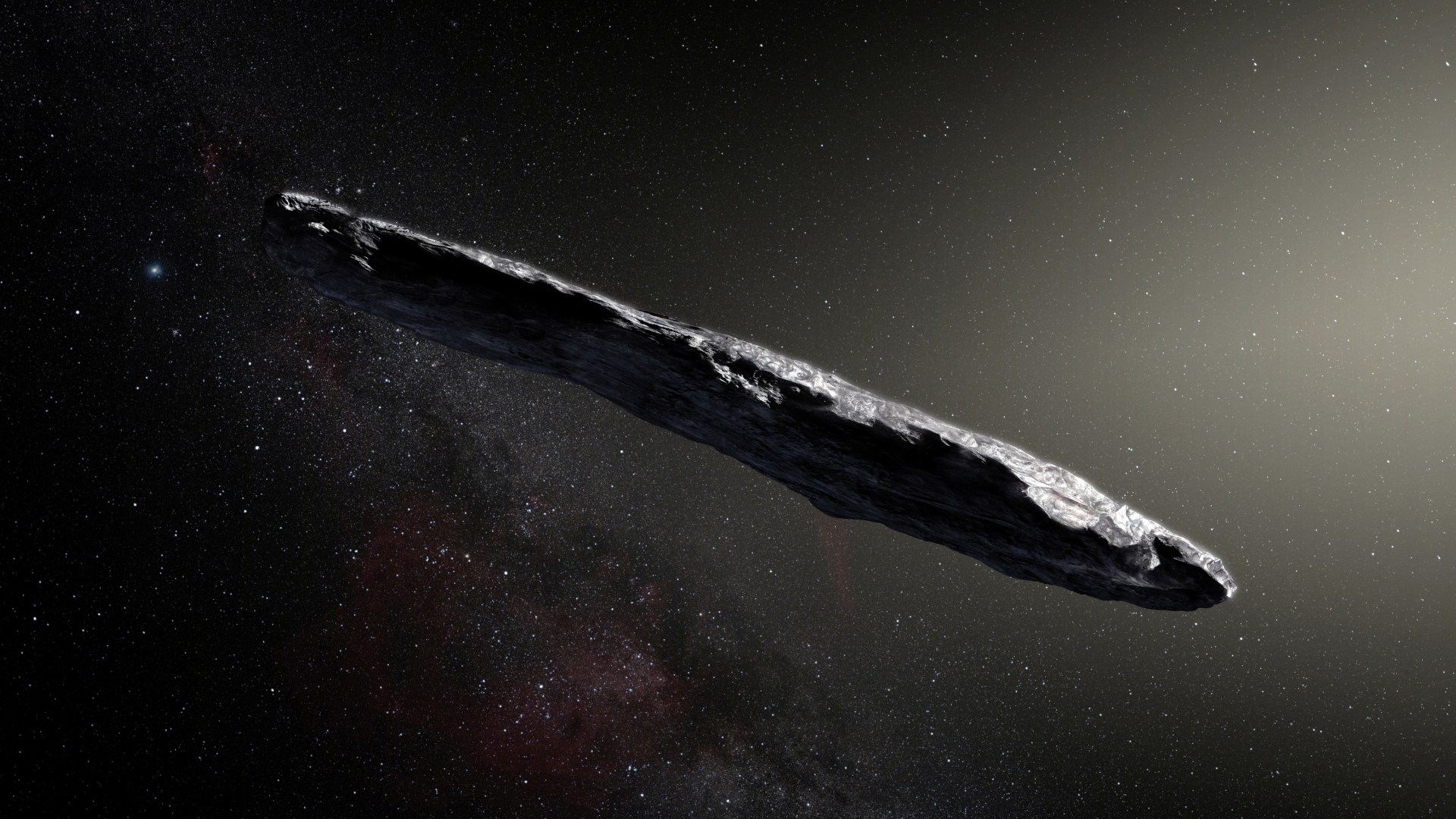Science
Controversial Study Claims Alien Probe Approaching Sun, Experts Disagree

A recent study has ignited debate among astronomers, suggesting that an interstellar object known as 3I/ATLAS could be a piece of “possibly hostile” alien technology. This claim, led by Avi Loeb, a prominent astrophysicist from Harvard University, has drawn significant skepticism from the scientific community. The paper, which has not yet undergone peer review, proposes that the object could be an extraterrestrial probe rather than just a natural comet.
On July 1, 2023, astronomers detected 3I/ATLAS as it approached the Sun at speeds reaching approximately 245,000 kilometers per hour (around 68 kilometers per second). Initially classified as a comet due to its “fuzziness” and short tail, this object is the fastest of its kind recorded in our solar system. Its trajectory indicates it originated from outside the solar system, making it the third known interstellar object to pass Earth, following the famous 1I/ʻOumuamua in 2017 and 2I/Borisov in 2019.
In the controversial paper, Loeb and colleagues conduct a detailed analysis of 3I/ATLAS’s astrodynamics, suggesting that if it is technological in nature, it could pose a potential threat. They reference the “Dark Forest” hypothesis, which posits that alien civilizations may remain silent and hidden to avoid detection and potential destruction by other intelligent life forms. This theory aims to explain the Fermi Paradox, which questions why, despite the vastness of the universe, we have yet to find definitive evidence of extraterrestrial life.
Loeb’s position has drawn criticism from various experts who label the claims as “nonsense” and “insulting.” They argue that current evidence overwhelmingly supports the idea that 3I/ATLAS is a natural comet, with characteristics that align with those of similar celestial bodies.
The object, estimated to be up to 20 kilometers in size, is believed to be around 7.6 billion years old, making it older than our solar system. Its orbit brings it close to other planets, including Venus, Mars, and Jupiter, which has led to further speculation. Yet mainstream scientists assert that such orbits are not uncommon for comets originating from the Milky Way’s thick disk, a region abundant with ancient stars.
To determine whether 3I/ATLAS could indeed be an alien probe, scientists will continue monitoring the object. Key indicators would include the detection of radio waves, which would suggest the object is operational, as well as any signs of propulsion or maneuvering that would differentiate it from natural debris. Should the object enter a stable orbit around Earth, it could pique the interest of extraterrestrial civilizations, given our planet’s unique conditions for life.
For now, the prevailing view within the scientific community leans toward 3I/ATLAS being an ancient comet. As the debate continues, the focus remains on gathering more data to understand the true nature of this enigmatic visitor from beyond our solar system.

-

 Top Stories3 months ago
Top Stories3 months agoTributes Surge for 9-Year-Old Leon Briody After Cancer Battle
-

 Entertainment4 months ago
Entertainment4 months agoAimee Osbourne Joins Family for Emotional Tribute to Ozzy
-

 Politics4 months ago
Politics4 months agoDanny Healy-Rae Considers Complaint After Altercation with Garda
-

 Top Stories4 months ago
Top Stories4 months agoIreland Enjoys Summer Heat as Hurricane Erin Approaches Atlantic
-

 World5 months ago
World5 months agoHawaii Commemorates 80 Years Since Hiroshima Bombing with Ceremony
-

 Top Stories3 months ago
Top Stories3 months agoNewcastle West Woman Patricia Foley Found Safe After Urgent Search
-

 Top Stories5 months ago
Top Stories5 months agoFianna Fáil TDs Urgently Consider Maire Geoghegan-Quinn for Presidency
-

 World5 months ago
World5 months agoCouple Convicted of Murdering Two-Year-Old Grandson in Wales
-

 World5 months ago
World5 months agoGaza Aid Distribution Tragedy: 20 Killed Amid Ongoing Violence
-

 World5 months ago
World5 months agoAristocrat Constance Marten and Partner Convicted of Infant Murder
-

 Top Stories4 months ago
Top Stories4 months agoClimbing Errigal: A Must-Do Summer Adventure in Donegal
-

 Top Stories4 months ago
Top Stories4 months agoHike Donegal’s Errigal Mountain NOW for Unforgettable Summer Views








